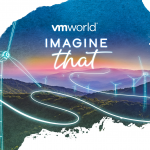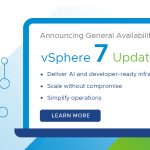I think most people who read this blog are well aware of who VMware's big partners are in the storage space. They had a very large presence & made a lot of cool announcements during VMworld 2011. However there were lots of other smaller storage vendors at this year's VMworld. So in between my break-out sessions, group discussions, expert 1:1 & booth duty, I decided that I'd have a look at what some of these lesser well known storage vendors are doing.
First off, I was amazed to see how many storage vendors/partners there were at this years VMworld. Admittedly, it had been a couple of years since I had made it to a VMworld (2009 in fact), and I was pretty much stuck doing lab captain for vSphere 4.0 for the whole of that conference. It would be nigh on impossible to blog about every single vendor. Instead, I'm going to mention a few that I thought were doing interesting and innovative things in the storage space.
Disclaimer – Before going any further, and you'll have read this before if you are a regular reader of my blog, I want to make it abundantly clear that VMware doesn't favour any one storage partner over another. I'm not personally endorsing any of these vendor's products either. The partners listed in this post are here simply because I personally found what they were doing interesting and innovative. I also didn't get to see every single exhibitor, so don't use this post as anything other than my personal meanderings about what I thought was cool at this year's VMworld.
Tintri
I had heard of Tintri before, and a poster to one of my previous blogs on alignment said that I should check them out. So I did. I met with Chris Bennett, and after a short discussion, I realised that they are doing some really cool things with their VM-aware storage. First off, these guys can do auto-alignment of the Guest OS without having to use any guest based tools. They achieve this using their VM-aware file system which allows storage objects to be mapped directly to VMDKs. So you immediately get your Guest OS/VM performing optimally from deployment. The other cool thing is their UI, or specifically the part of their UI that is used for datastore performance monitoring. These guys are not only able to measure end-to-end latency, but they also have the capability to drill down into each section of the I/O path to see where latency is accumulating, from the Guest OS layer down to the Storage layer. Any bottlenecks should now be easily identifiable. Not only that, but they show you how much performance headroom is still available on a particular datastore from an IOPS, throughput & latency perspective. So the question – 'Can I put more VMs on this datastore?' is answered at a single glance at this UI. I guess I wasn't the only one impressed by Tintri, as they got runner-up in the 'Hardware for Virtualization' category by TechTarget for best of VMworld 2011. More at http://www.tintri.com.
PureStorage
These guys have a storage array (FlashArray) product built completely from flash memory. Basically it means no spinning disks backing their LUNs. This is cool since all I/O will be fast, and there will be no hot-spots. But the first though I had is that flash is expensive, and that these arrays would cost a fortune. Apparently not. As Matt Kixmoeller explained to me, PureStorage uses lower-cost MLC (multi-level cell) flash, along with deduplication and compression to make the cost per GB of flash relatively cheap. This flash array should give you persistent I/O latency in the region of 100s of microseconds rather than 10s of milliseconds which is what you typically see with spinning disks. More at http://www.purestorage.com.
Coraid
I'll have to admit that I hadn't heard of Coraid before this show. The did have a big presence though, so I wandered over to check them out. After chatting with one of their SEs, Dennis Sheehan, it became quickly apparent that what they were doing was really quite cool. First off, these guys were using ATA over Ethernet (AoE) as a protocol. So I thought – what is the advantage of doing that? And then it clicked… These guys use their own Coraid Ether HBAs to connect from the ESX to the storage. There is no need to do any port binding/multipathing/discoveries as the Coraid LUNs show up as local devices in the ESX. However, the performance of AoE is on a par with Fiber Channel, so you are getting a high level of performance but with a less complex & probably less costly environment (when you consider zoning, masking, switches, cabling). The Coraid storage array, SRX, uses a combo/mix of SAS, SSD & SATA, and their Coraid EtherFlash™ solution, announced at VMworld 2011, adds support for flash drives. Coraid also has a virtual appliance (VSX) product which sits in front of a number of SRX arrays, and enables mirroring/remote replication and snaphot/clones. More at http://www.coraid.com.
Falconstor
Falconstor provides a storage virtualization product called NSS, Network Storage Server. I used this product in the past. The NSS basically sits in front of any storage vendor's array, and present 'Falconstor' LUNs to the ESX, masking out the physical characteristics of the underlying LUN. The advantage of this is that once the physical characteristics of the underlying storage arrays are masked from the ESX, you can start to do cool things like replicate LUNs across two different storage arrays.This in turn means you can implement products like VMware's Site Recovery Manager (SRM) on top of those virtualized & replicated LUNs. That's just one example. The most interesting thing which caught my eye at this year's VMworld is that Falconstor are now supporting VAAI (vSphere Storage APIs for Array Integration) on their NSS storage virtualization product. This is really cool, because now operations like Storage vMotion or the creation of eager-zeroed thick VMDKs can be offloaded to the NSS, freeing up the VMkernel for other activities, and it doesn't matter which physical storage array is sitting in the back-end. I'm also making the assumption that if you have a storage array which doesn't support VAAI, but you virtualize it with NSS, then you can also leverage VAAI offloading. This is very cool indeed. More at http://www.falconstor.com/
Raidundant
These were another vendor that I'd never heard of before, but that wasn't surpising since this was there first ever trade show. I had a discussion with Murat Karslioglu about their products. While their 'Sky Technology' has many of the features you would expect to find in most scalable storage arrays (Dedupe, TP, Replication, Snapshots, etc) & support lots of protocols (FC, FCoE, iSCSI, NAS) there was one thing that stood out. These guys have really designed their arrays with a primary focus – fault tolerance & disaster/recovery. This is apparent from all the fault-tolerant features included in the design of the array. And Raidundant also include the ability to pop-out a complete disk chassis for simple offsite storage. This makes it very easy for transportation. A very interesting solution. More at http://raidundant.com/v2
Obviously I'm only scratching the surface here with this list. There are lots of storage vendors actively participating in the whole virtualization space. This blog, as I previously mentioned, is just what caught my eye at VMworld 2011, but there are many, many other storage vendors also doing innovative things. It certainly is a very interesting space to be working.
Get notification of these blogs postings and more VMware Storage information by following me on Twitter: VMwareStorage















